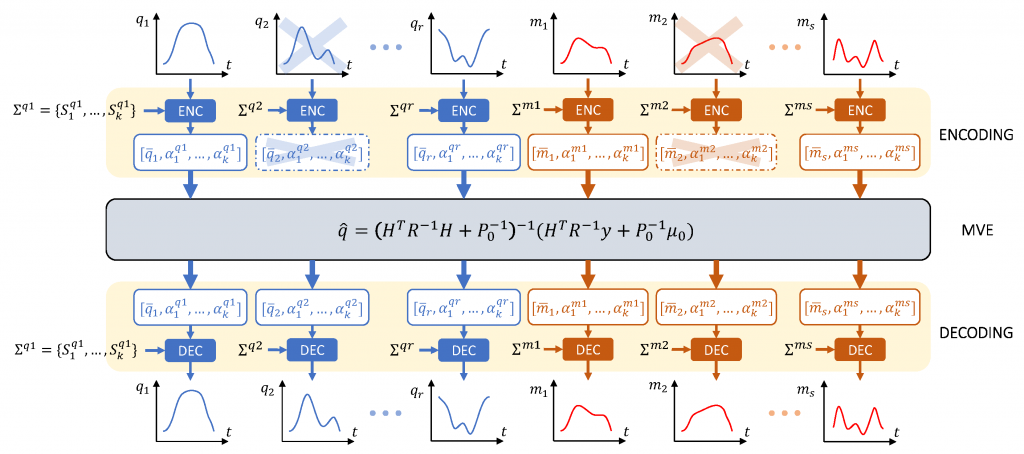Paolo Bonifati, Marco Baracca, Mariangela Menolotto, Giuseppe Averta, and Matteo Bianchi
Sensors

Abstract
Wearable sensing solutions have emerged as a promising paradigm for monitoring human musculoskeletal state in an unobtrusive way. To increase the deployability of these systems, considerations related to cost reduction and enhanced form factor and wearability tend to discourage the number of sensors in use. In our previous work, we provided a theoretical solution to the problem of jointly reconstructing the entire muscular-kinematic state of the upper limb, when only a limited amount of optimally retrieved sensory data are available. However, the effective implementation of these methods in a physical, under-sensorized wearable has never been attempted before. In this work, we propose to bridge this gap by presenting an under-sensorized system based on inertial measurement units (IMUs) and surface electromyography (sEMG) electrodes for the reconstruction of the upper limb musculoskeletal state, focusing on the minimization of the sensors’ number. We found that, relying on two IMUs only and eight sEMG sensors, we can conjointly reconstruct all 17 degrees of freedom (five joints, twelve muscles) of the upper limb musculoskeletal state, yielding a median normalized RMS error of 8.5% on the non-measured joints and 2.5% on the non-measured muscles.
@article{bonifati2023multi,
title={A Multi-Modal Under-Sensorized Wearable System for Optimal Kinematic and Muscular Tracking of Human Upper Limb Motion},
author={Bonifati, Paolo and Baracca, Marco and Menolotto, Mariangela and Averta, Giuseppe and Bianchi, Matteo},
journal={Sensors},
volume={23},
number={7},
pages={3716},
year={2023},
publisher={MDPI}
}

